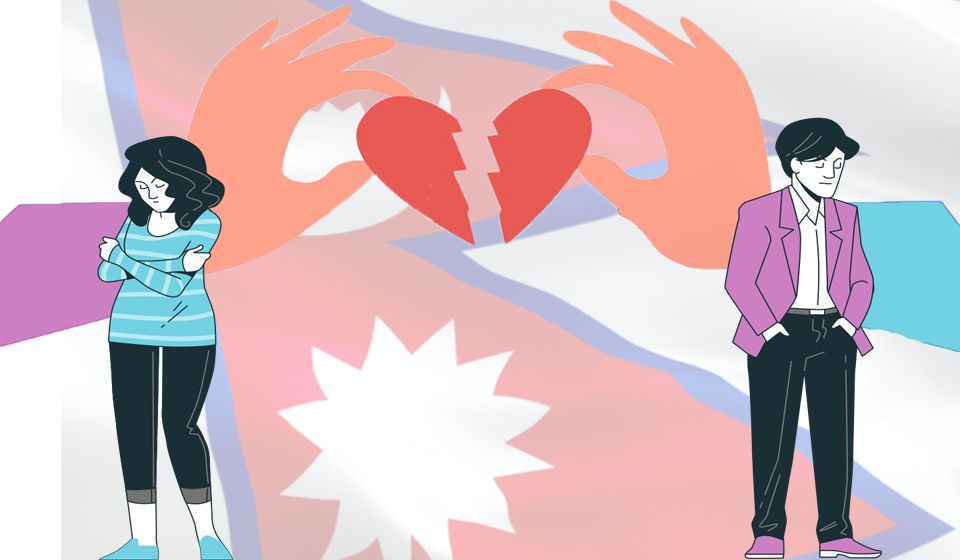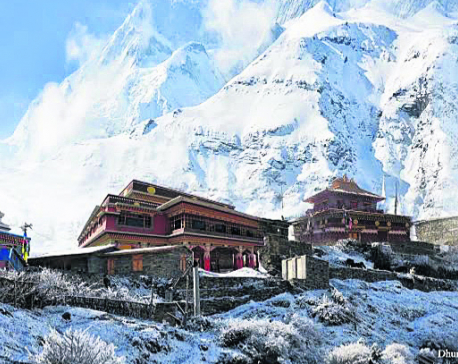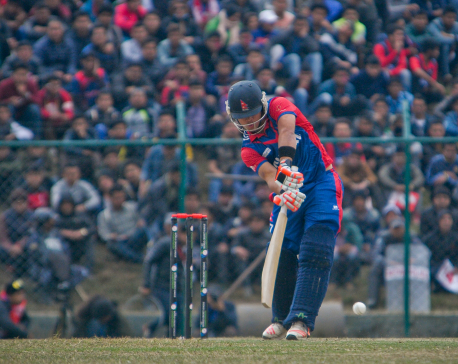
OR
Blog


Shreya Khatiwada
The author is a participant of the Dalit Reader’s Writing for Social Justice Coursenews@myrepublica.com
More from Author
In Nepal, where the caste system has penetrated society for centuries, inter-caste love relations remain a crime.
On May 24, 2011, Nepal unanimously voted to adopt one of the world’s most comprehensive laws on caste-based discrimination, namely the Caste-Based Discrimination and Untouchability (Offence and Punishment) Act. For the first time in our history, caste-based discrimination and the practice of ‘untouchability’ were legally prohibited in both public and private spheres. This historic achievement was a product of relentless advocacy by Dalit activists, who took to the streets to celebrate the significant achievement. Amidst the signs of progress, many asked, ‘Would this move finally bring equality and justice for Dalits and protect their lives?’
Fast forward two decades and both remain far from reach. Perhaps the most stinging and widely covered testament to this fact is the horrific ‘Rukum massacre’ that occurred on May 23, 2020, only two years ago and nearly a decade after the law was passed.
The story begins as hundreds of others do: a boy fell in love with a girl. Nabaraj, a 21 year old, so-called “low-caste” boy was in love with Sushma Malla Thakuri, a 17 year old so-called ‘upper caste' girl. When Sushma’s family learned about her relationship, they warned Nabaraj and his friends to keep away from her. Determined to keep their union intact and unable to live apart, on May 23, Nabaraj, accompanied by 18 friends, headed to Sushma’s village in Rukum District’s Soti village, with plans to elope.
After being senselessly lynched by a mob, Nawaraj BK and the bodies of his five friends were thrown into the Bheri river. They washed up on its banks the next morning. Their crime? For Nabaraj, it was falling in love with a so-called ‘upper-caste’ girl; and for his friends, it was supporting Nabaraj to get his love. Perhaps the most poignantly painful aspect of this case was the fact that the chairperson of the village reportedly supported the violent mob; and former Finance Minister and former Home Minister Janardan Sharma protected the alleged perpetrators.
The gory details of the case have been recounted countless times by mainstream media, but even so, there has not been adequate discussion on those responsible for the outcome: the mob that chased six young men, lynched them senselessly, and discarded their bodies into the Bheri river solely because they did not agree with the idea of a Dalit man marrying a so-called ‘high-caste’ woman.
Even though love neither seeks for caste nor for class, our society and socialization process hinder inter-caste marriages. It’s treated as a crime; and many love relations that have been thwarted have gone unreported. And this is not the first time where a boy was brutally killed for their love relations and marrying a non-Dalit girl. The history is full of brutal killings of those who tried inter-caste marriages.
In July 2016, Ajit Mijar faced a similar fate for marrying a non-Dalit girl. On July 14, 2016, he was found allegedly murdered after five days the couple was forced to abandon their marriage by the girl’s relatives in the mediation of Panchkhal Area Police Office.
Nabaraj’s and Ajit’s stories are a few among countless; the Nepal Human Rights Year Book 2021 documents 5,543 victims of human rights violations in 2020 alone, of which 62 incidents were related to caste-based discrimination. And countless cases go unreported and are unaccounted for. This social issue has plagued South Asian societies for centuries; and it has been detrimental to at least 20% of the entire country in Nepal.
Nawaraj and Ajit are a few of the representatives of deep actuality of our society. For centuries, there have been several unrecorded cases where Dalits were tortured and their human rights were violated. Many Dalit women are beaten up for fetching water from public taps. They can’t quench their thirst even with the availability of water. They have been kept in isolation for many years and restricted to go to many places resulting in disparities in health, education, representation, access, wealth, housing, respect, dignity, etc. These acts of caste-based brutality and atrocities have prevented them from realizing their human potential.
Navaraj’s and Ajit’s murders prove that the 2011 Caste-Based Discrimination and Untouchability (Offence and Punishment) Act has been grossly unsuccessful in protecting Dalit lives. Despite the incorporation of equal rights to all Dalits in Article 40 of the Constitution of Nepal 2015, Dalit women and men continue to face caste-based violence, discrimination, and humiliation, mocking us for our deep-seated desire for social harmony.
Ajit’s family has not received his dead body, which is still waiting for the justice process to begin at the Tribhuvan University Teaching Hospital’s mortuary, due to the state’s failure to arrest the alleged perpetrators. In the case of Navaraj, the police arrested twelve people from the girl's family including Sushma, her parents and ward chairperson who were involved in the killing. However, a fair trial and assurance of justice have been questionable due to interference from the higher-level state authorities.
The law-enforcement agencies and state authorities are not alone in the problems. The villagers and parents of Sushma are the relevant examples of our unpleasant socialization agents. This reveals the underground problem among us, who advocate for equity in all the sectors, but refuse inter-caste marriage and continue the violence against Dalits.
The caste system has become the institution of dehumanization and violence that deny basic human rights, freedom and act as an agent of exploitation and discrimination which has invited more damage to the social harmony and integrity. This ill-practice incorporates cultural relativism and mal functioning in our society at the cost of many innocent lives like Nawaraj Bk and Ajit Mijar. It’s distressing that we are living in a country where the person who has committed a crime isn't punished, and the victims continue to suffer. It’s already been a long time since this incident, yet it’s heartrending to see that inter-caste marriage remains a crime. Nawaraj BK and Ajit Mijar are just examples that depict the sad reality of our society. Many crimes are disguised, and people do not welcome those from the so-called ‘lower castes’, which causes them to be victimized on a regular basis.
(Shreya Khatiwada is a participant of the Dalit Reader’s Writing for Social Justice Course.)
You May Like This

Nepal online trade: Decorating Nepal
Nepal Online Trade is a business initiative of Sajak Yonjan that sells décor materials imported from China, Hong Kong, and... Read More...

Dhurmus, Suntali to build ‘a Nepal within Nepal’
KATHMANDU, June 5: After successfully completing three settlement projects for earthquake victims and other communities, the actor couple Sitaram Kattel (Dhurmus)... Read More...

Nepal vs Kenya: Five crucial things Nepal looks for second match
KATHMANDU, March 12: Nepal is taking on Kenya on Monday in the second match of the ICC World Cricket League... Read More...











Just In
- Challenges Confronting the New Coalition
- NRB introduces cautiously flexible measures to address ongoing slowdown in various economic sectors
- Forced Covid-19 cremations: is it too late for redemption?
- NRB to provide collateral-free loans to foreign employment seekers
- NEB to publish Grade 12 results next week
- Body handover begins; Relatives remain dissatisfied with insurance, compensation amount
- NC defers its plan to join Koshi govt
- NRB to review microfinance loan interest rate







Leave A Comment